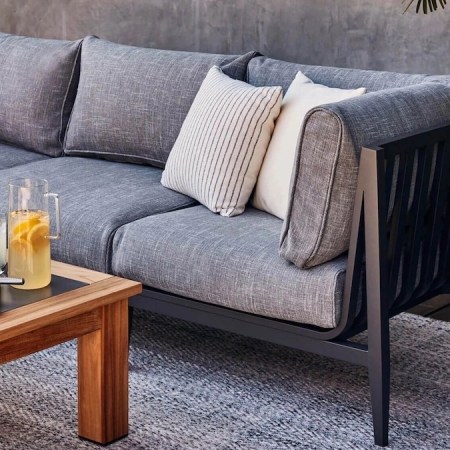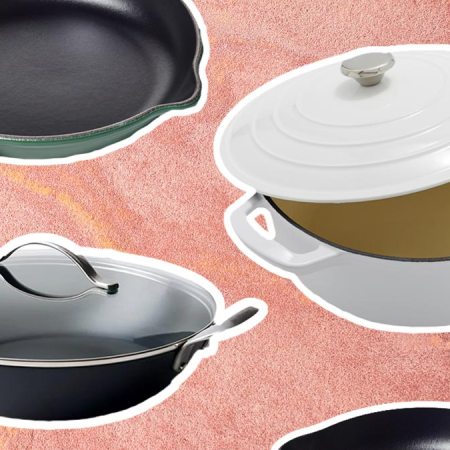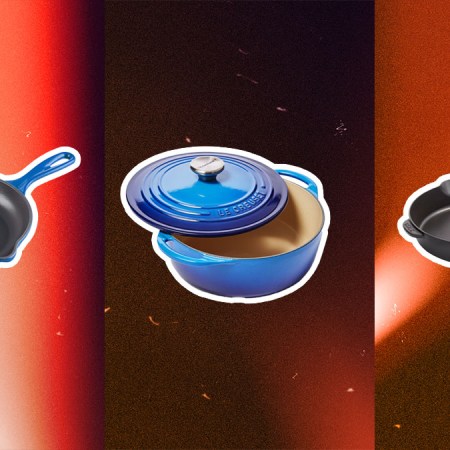I am the proud owner of exactly zero nonstick pans. When I recently moved, I gave away any that were still in good condition and threw away the ones that were too chipped to use without getting bits of Teflon in my food. Since then I’ve only been cooking with cast iron, not because modern nonstick pans aren’t safe but because they’re disposable. They’re like the plastic water bottles of cookware, the inexpensive ones most people buy lasting only a few years instead of your entire lifetime.
Of course, cast iron isn’t ideal for all cooking. To diversify my kitchen, I recently picked up an intriguing new option from direct-to-consumer company Made In called the Blue Carbon Steel Frying Pan.
Never heard of “blue carbon steel”? I hadn’t either, but Made In makes plenty of lofty claims about it (which is par for the course with D2C companies). So first we’ll give you a breakdown of what exactly you’re getting with this pan, and then see if it lives up to the marketing copy.
The idea here is that it combines the quick-heating, slick-surface qualities of a nonstick pan with the durability and seasoning of cast iron. But unlike cast iron, it’s thinner and lighter (and unlike modern companies like Lodge, it’s not pre-seasoned). And unlike nonstick pans, you’ll have to season it a few times to build up a similarly slick surface (though it’ll never beat Teflon).

A few questions you probably have:
- What is blue carbon steel? “Blue” refers to a heat treatment process known as “blue ironing” which helps resist rust and corrosion. These particular pans are made in France (as opposed to a lot of Made In’s other USA-made products) in a factory that’s been doing this for hundreds of years.
- Where can you use the pan? It works on both induction and gas stovetops, as well as in the oven (where it’s safe up to 1200 degrees Fahrenheit) and on open fires.
- What should you cook in it? Made In suggests big pieces of meat, from steaks to chicken breasts to fish, as well as high-heat vegetables like Brussels sprouts and peppers. Plus, the shape of the pan makes it ideal for sauteing. But really, you can cook just about anything, except Made In cautions against long-cooking acidic and alkaline ingredients like wine and tomato sauce.
- Do cast iron rules apply to carbon steel? Pretty much. Fats are necessary for cooking, and soap is not necessary for cleaning. Either wipe with a paper towel or wash with water only, then dry and wipe with oil if necessary.
How does it hold up to the claims?
- Claim: “Heats quickly and efficiently.” Verdict: Compared to slow heating and in efficient cast iron, this pan is quick. In fact, it heats up so fast that I singed my eggs on my first attempt.
- Claim: “Once you build up a super slick patina, you can use it the way you’d use a nonstick pan too.” Verdict: The context for this is that it’s going to take a while to build up some seasoning in this pan. Since it’s unseasoned out of the box, you’ll have to take about 75 minutes to dry it, coat it with oil and heat it in the oven. But I did that and then cooked dinner for the first time in the same night, and it was actually fun to do the entire seasoning process — it makes you see the pan more as an heirloom than a utensil. And even though I only tested it out for a short period, it’s hard to imagine it will never be truly nonstick. It will act like those pans, but you’ll always need oil or butter to cook.
- Claim: “Ergonomic handle is easy to maneuver for either your left or right hand.” Verdict: This is a big deal that cast iron users will sympathize with. Here, the handle won’t heat up like one-piece cast iron and the pan, while big in size, is as light as a comparable stainless steel or nonstick model.

Should you buy one?
Is Made In’s Blue Carbon Steel a magical combination of cast iron and nonstick with all the benefits and none of the downsides? No. But it is an intriguing heirloom-worthy piece for those willing to put in that extra bit of care not just into their food, but their cookware as well. If you’re someone who can’t quite get into cast iron, whether for its weight or pebble-like surface, but want to upgrade your kitchen, this is the pan for you. If you’re a diehard nonstick fiend, then you should stick with your Teflon seasoning because old-world materials like this are never going to match that. As for me, my forearms are thankful to have a break with this lighter, hardwearing pan.
This article was featured in the InsideHook newsletter. Sign up now.


















